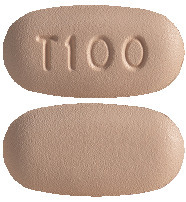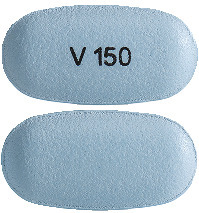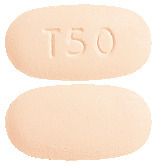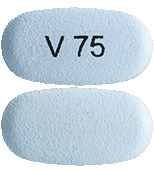SUMMARY CMI
TRIKAFTA®
Consumer Medicine Information (CMI) summary
The full CMI on the next page has more details. If you are worried about using this medicine, speak to your doctor or pharmacist.
▼ This medicine is new or being used differently. Please report side effects. See the full CMI for further details. Read before using this medicine.
1. Why am I using TRIKAFTA?
TRIKAFTA contains the active ingredients elexacaftor, tezacaftor and ivacaftor. TRIKAFTA is used for the treatment of those who meet the diagnostic criteria of cystic fibrosis in patients aged 2 years and older with at least one mutation in the cystic fibrosis transmembrane conductance regulator (CFTR) gene that is responsive based on clinical or in vitro evidence.
For more information, see Section 1. Why am I using TRIKAFTA? in the full CMI.
2. What should I know before I use TRIKAFTA?
Do not use if you have ever had an allergic reaction to TRIKAFTA or any of the ingredients listed at the end of the CMI.
Talk to your doctor if you have any other medical conditions, take any other medicines, or are pregnant or plan to become pregnant or are breastfeeding.
For more information, see Section 2. What should I know before I use TRIKAFTA? in the full CMI.
3. What if I am taking other medicines?
Some medicines may interfere with TRIKAFTA and affect how it works.
A list of these medicines is in Section 3. What if I am taking other medicines? in the full CMI.
4. How do I use TRIKAFTA?
Your doctor will tell you how much TRIKAFTA you need to take each day. This may depend on your condition and whether or not you are taking other medicines. TRIKAFTA is for oral use.
More instructions can be found in Section 4. How do I use TRIKAFTA? in the full CMI.
5. What should I know while using TRIKAFTA?
| Things you should do |
|
| Things you should not do |
|
| Looking after your medicine |
|
For more information, see Section 5. What should I know while using TRIKAFTA? in the full CMI.
6. Are there any side effects?
All medicines can have side effects. If you do experience any side effects, most of them are minor and temporary. However, some side effects may need medical attention. Ask your doctor or pharmacist if you have any further questions about side effects.
Tell your doctor or pharmacist as soon as possible if you do not feel well while you are taking TRIKAFTA.
Some common side effects experienced by patients taking TRIKAFTA include headache, common cold symptoms or diarrhoea.
If you experience significant pain or discomfort in the upper right stomach (abdominal) area, or yellowing of your skin or the white parts of your eyes these may be serious side effects associated with liver problems.
For more information, including what to do if you have any side effects, see Section 6. Are there any side effects? in the full CMI.
▼ This medicine is subject to additional monitoring. This will allow quick identification of new safety information. You can help by reporting any side effects you may get. You can report side effects to your doctor, or directly at www.tga.gov.au/reporting-problems.
FULL CMI
TRIKAFTA® (tri-KAF-tuh)
Active ingredient(s): Elexacaftor/ Tezacaftor/ Ivacaftor, Ivacaftor
Consumer Medicine Information (CMI)
This leaflet provides important information about using TRIKAFTA. You should also speak to your doctor or pharmacist if you would like further information or if you have any concerns or questions about using TRIKAFTA.
Where to find information in this leaflet:
1. Why am I using TRIKAFTA?
2. What should I know before I use TRIKAFTA?
3. What if I am taking other medicines?
4. How do I use TRIKAFTA?
5. What should I know while using TRIKAFTA?
6. Are there any side effects?
7. Product details
1. Why am I using TRIKAFTA?
TRIKAFTA contains the active ingredients elexacaftor, tezacaftor and ivacaftor.
TRIKAFTA is used for the treatment of those who meet the diagnostic criteria of cystic fibrosis in patients aged 2 years and older with at least one mutation in the cystic fibrosis transmembrane conductance regulator (CFTR) gene that is responsive based on clinical or in vitro evidence
TRIKAFTA belongs to a group of medicines called "cystic fibrosis transmembrane conductance regulator (CFTR) modulators". TRIKAFTA includes two types of tablets or granules, one contains elexacaftor, tezacaftor and ivacaftor (morning dose) and the other contains ivacaftor (evening dose).
Elexacaftor and tezacaftor are "CFTR correctors" and work to increase the amount of protein at the cell surface.
Ivacaftor is a "CFTR potentiator" that makes the protein work better once it reaches the cell surface.
TRIKAFTA is not addictive.
What is cystic fibrosis?
Cystic fibrosis is caused by genetic defects that limit the flow of chloride and water through cell membranes. As a result, the mucus in the lungs (and other organs) becomes thick and sticky, clogging the lungs, and making it easier for germs to grow. TRIKAFTA is a medicine that works by improving the flow of chloride and water in patients with cystic fibrosis who have a certain genetic defect.
TRIKAFTA helps your breathing by improving your lung function. You may also notice that you do not get ill as often, or that it is easier to maintain a healthy weight.
2. What should I know before I use TRIKAFTA?
Warnings
Do not use TRIKAFTA if:
- you are allergic to elexacaftor, tezacaftor, ivacaftor, or any of the ingredients listed at the end of this leaflet.
Always check the ingredients to make sure you can use this medicine.
Check with your doctor if you:
- have any other medical conditions
- take any medicines for any other condition (see Section 3. What if I am taking other medicines?)
During treatment, you may be at risk of developing certain side effects. It is important you understand these risks and how to monitor for them. See additional information under Section 6. Are there any side effects?
Pregnancy and breastfeeding
Check with your doctor if you are pregnant or intend to become pregnant.
Talk to your doctor if you are breastfeeding or intend to breastfeed.
It is unknown whether TRIKAFTA is excreted in human milk. If you plan to breastfeed, ask your doctor for advice before taking TRIKAFTA.
Use in children
Do not give TRIKAFTA to children under 2 years of age.
It is not known if TRIKAFTA is safe and effective in children under 2 years of age.
Tell your doctor if you:
- have kidney disease or kidney problems in the past.
- have liver disease or you have had liver problems in the past.
Laboratory Testing
Your doctor will do some blood tests to check your liver prior to and while you are taking TRIKAFTA, particularly during the first year and especially if you have had high liver enzymes in the past. Increased liver enzymes in the blood are common in patients with CF and have been seen in some people receiving TRIKAFTA.
Your doctor may need to adjust your dose of TRIKAFTA or monitor your blood tests for liver enzymes.
3. What if I am taking other medicines?
Tell your doctor or pharmacist if you are taking any other medicines, including any medicines, vitamins, or supplements that you buy without a prescription from your pharmacy, supermarket, or health food shop.
Some medicines may interfere with TRIKAFTA and affect how it works. You may need to take different amounts of your other medicines, or you may need to take different medicines whilst taking TRIKAFTA. Your doctor will advise you.
Take TRIKAFTA with fat-containing food and avoid food or drinks containing grapefruit.
Tell your doctor or pharmacist if you are taking any of the following:
| Antifungal medicines used for the treatment of fungal infections | ketoconazole, itraconazole, posaconazole, voriconazole, fluconazole |
| Antibiotic medicines used for the treatment of bacterial infections | telithromycin, clarithromycin, erythromycin, rifampicin, rifabutin |
| Anticonvulsant medicines used for the treatment of epileptic seizures | phenobarbital, carbamazepine, phenytoin |
| Herbal medicine | St. John's wort (Hypericum perforatum) |
| Immunosuppressants used after organ transplantation | ciclosporin, everolimus, sirolimus, tacrolimus |
| Cardiac glycosides used for the treatment of mild to moderate congestive heart failure and an abnormal heart rhythm | digoxin |
| Anticoagulants used to prevent blood clots from forming or growing larger in blood and blood vessels | warfarin |
| Medicines for diabetes | glimepiride, glipizide, glyburide, nateglinide and repaglinide |
| Medicines for lowering blood cholesterol | pitavastatin |
| Medicines for lowering blood pressure | verapamil |
Your doctor or pharmacist has more information on medicines to be careful with or to avoid while taking TRIKAFTA.
Check with your doctor or pharmacist if you are not sure about what medicines, vitamins or supplements you are taking and if these affect TRIKAFTA.
4. How do I use TRIKAFTA?
How much to take
Your doctor will tell you how much TRIKAFTA you need to take each day. This may depend on your condition and whether or not you are taking other medicines.
The usual dose for patients aged 6 to less than 12 years weighing 30 kg or more or patients aged 12 years and older is:
- Two orange tablets in the morning stamped with "T100" and;
- One light blue tablet in the evening stamped with "V 150"
The usual dose for patients aged 6 to less than 12 years weighing less than 30 kg is:
- Two light orange tablets in the morning stamped with "T50" and;
- One light blue tablet in the evening stamped with "V 75"
The usual dose for patients aged 2 to less than 6 years weighing 14 kg or more is:
- One white and orange morning dose sachet in the morning and;
- One white and pink evening dose sachet in the evening
The usual dose for patients aged 2 to less than 6 years weighing less than 14 kg is:
- One white and blue morning dose sachet in the morning and;
- One white and green evening dose sachet in the evening
If you have liver problems, your doctor may need to reduce the dose, or stop treatment with TRIKAFTA. Follow all instructions given by your doctor, or health care professional.
When to take TRIKAFTA
- TRIKAFTA should be used every day. Continue taking it for as long as your doctor tells you.
- Your doctor will determine if your treatment should be stopped.
How to take TRIKAFTA
TRIKAFTA is for oral use.
Take the morning and evening doses with fat-containing food approximately 12 hours apart.
Meals and snacks recommended in CF guidelines or meals recommended in standard nutritional guidelines contain adequate amounts of fat. A serving size of foods appropriate for age from a recommend typical CF diet should be given. Examples of meals or snacks that contain fat are those prepared with butter or oils or those containing eggs.
Other fat-containing foods are:
- Cheese, whole milk, whole-milk dairy products, yoghurt, chocolate
- Meats, oily fish
- Avocados, hummus, soy-based products (tofu)
- Nuts, fat-containing nutritional bars or drinks
Tablets
Do not break, chew, or dissolve the tablets. Swallow the tablets whole.
Granules
Each sachet is for single use only and the contents of each sachet should be mixed with age-appropriate soft food or liquid.
Giving TRIKAFTA to your child
- Hold sachet of granules with cut line on top.
- Shake sachet gently to settle contents.
- Tear or cut sachet open along cut line.
- Mix the entire content of a sachet with one teaspoon (5 mL) of age-appropriate soft food or liquid. Look inside the sachet to make sure there are no granules left inside.
- Food or liquid should be at room temperature or below. Some examples of age-appropriate soft foods or liquids include pureed fruits or vegetables, yogurt, water, whole milk or juice.
- Once mixed, give the product to your child immediately. If this is not possible, give it within one hour after mixing. Ensure that the mixture is completely and immediately consumed.
- A fat-containing meal or snack should be given to your child just before or just after dosing.
If you forget to use TRIKAFTA
TRIKAFTA should be used regularly at the same time each day.
If less than 6 hours have passed since you missed a dose, either morning or evening, take the missed dose as soon as possible. Then go back to your usual schedule.
If more than 6 hours have passed since you missed a dose:
- If you missed the morning dose, take it as soon as you remember. Do not take the evening dose. Take the next morning dose at the usual time.
- If you missed the evening dose, do not take the missed dose. Wait for the next day and take the morning dose as usual.
Do not take a double dose to make up for the dose you missed. This may increase the chance of you getting an unwanted side effect.
If you are not sure what to do, talk to your doctor or pharmacist.
If you take too much TRIKAFTA
If you think that you have used too much TRIKAFTA, you may need urgent medical attention.
You should immediately:
- phone the Poisons Information Centre
(by calling 13 11 26), or - contact your doctor, or
- go to the Emergency Department at your nearest hospital.
You should do this even if there are no signs of discomfort or poisoning.
5. What should I know while using TRIKAFTA?
Things you should do
Keep all of your doctor's appointments so that your progress can be checked.
- Use TRIKAFTA exactly as your doctor has prescribed.
- Take TRIKAFTA with fat-containing food and avoid food or drinks containing grapefruit.
- Tell your doctor if you are pregnant or become pregnant while using TRIKAFTA.
- Tell your doctor if, for any reason, you have not used TRIKAFTA exactly as prescribed.
- Your doctor may perform some eye examinations prior to and during treatment with TRIKAFTA. Abnormality of the eye lens (cataract) without any effect on vision has been noted in some patients receiving this treatment.
Remind any doctor, dentist or pharmacist you visit that you are using TRIKAFTA.
Things you should not do
- Do not stop using TRIKAFTA or change the dose without first checking with your doctor.
- Do not let yourself run out of medicine over the weekend or on holidays.
- Do not give TRIKAFTA to anyone else even if they have the same condition as you.
- Do not use TRIKAFTA to treat other complaints unless your doctor tells you to.
- Do not take any other medicines whether they require a prescription or not without first telling your doctor or consulting a pharmacist.
Things to be careful of
Avoid food or drinks containing grapefruit during treatment with TRIKAFTA as this may increase the side effects of TRIKAFTA by increasing the amount of TRIKAFTA in your body.
TRIKAFTA tablets contains lactose, the TRIKAFTA granules contain lactose and sucralose. If you have been told by your doctor that you have intolerance to some sugars, contact your doctor before taking this medicine.
Driving or using machines
TRIKAFTA is not expected to have an impact on the ability to drive and use machines.
Looking after your medicine
- Store below 30°C. Store in original container.
- Keep this medicine where young children cannot reach it.
Do not store it:
- in the bathroom or near a sink, or
- in the car or on windowsills.
Follow the instructions in the carton on how to take care of your medicine properly.
Getting rid of any unwanted medicine
If you no longer need to use this medicine or it is out of date, take it to any pharmacy for safe disposal.
Do not use this medicine after the expiry date.
6. Are there any side effects?
All medicines can have side effects. If you do experience any side effects, most of them are minor and temporary. However, some side effects may need medical attention.
See the information below and, if you need to, ask your doctor or pharmacist if you have any further questions about side effects.
Tell your doctor or pharmacist as soon as possible if you do not feel well while you are taking TRIKAFTA.
Less serious side effects
| Less serious side effects | What to do |
Very common side effects (may affect more than 1 in 10 people)
Common side effects (may affect up to 1 in 10 people)
Other side effects seen
| Speak to your doctor if you have any of these less serious side effects and they worry you. |
Serious side effects
| Serious side effects | What to do |
| Call your doctor straight away or go straight to the Emergency Department at your nearest hospital if you notice any of these serious side effects. |
Serious side effects are uncommon.
This is not a complete list of all possible side effects. Your doctor or pharmacist has a more complete list.
Tell your doctor or pharmacist if you notice anything else that may be making you feel unwell, even if it is not on this list.
Other side effects not listed here may occur in some people and there may be some side effects not yet known.
Reporting side effects
After you have received medical advice for any side effects you experience, you can report side effects to the Therapeutic Goods Administration online at www.tga.gov.au/reporting-problems. By reporting side effects, you can help provide more information on the safety of this medicine.
Always make sure you speak to your doctor or pharmacist before you decide to stop taking any of your medicines.
7. Product details
This medicine is only available with a doctor's prescription.
What TRIKAFTA tablets contain
Morning dose
| Active ingredients (main ingredients) | Elexacaftor, Tezacaftor, Ivacaftor |
| Other ingredients (inactive ingredients) | Hypromellose Hypromellose acetate succinate Sodium lauryl sulfate Croscarmellose sodium Microcrystalline cellulose Magnesium stearate 100 mg/50 mg/75 mg Tablets: OPADRY Complete Film Coating System 20A130036 ORANGE (ARTG PI No: 136412) 50 mg/25 mg/37.5 mg Tablets: OPADRY Complete Film Coating System 20A130039 ORANGE (ARTG PI No: 141534) |
Evening dose
| Active ingredient (main ingredient) | Ivacaftor |
| Other ingredients (inactive ingredients) | Silicon dioxide Croscarmellose sodium Hypromellose acetate succinate Magnesium stearate Microcrystalline cellulose Sodium lauryl sulfate Carnauba wax Ivacaftor 150 mg Tablets: OPADRY II Complete Film Coating System 85F90614 BLUE (ARTG PI No: 108371) OPACODE monogramming ink S-1-17823 BLACK (ARTG PI No: 12108) Ivacaftor 75 mg Tablets: OPADRY II Complete Film Coating System 85F105098 BLUE (ARTG PI No: 140157) OPACODE monogramming ink S-1-17823 BLACK (ARTG PI No: 12108) |
| Potential allergens | Lactose monohydrate |
What TRIKAFTA granules contain
Morning dose
| Active ingredients (main ingredients) | Elexacaftor, Tezacaftor, Ivacaftor |
| Other ingredients (inactive ingredients) | Silicon dioxide Croscarmellose sodium Hypromellose Hypromellose acetate succinate Magnesium stearate Mannitol Sodium lauryl sulfate |
| Potential allergens | Lactose monohydrate Sucralose |
Evening dose
| Active ingredient (main ingredient) | Ivacaftor |
| Other ingredients (inactive ingredients) | Silicon dioxide Croscarmellose sodium Hypromellose acetate succinate Magnesium stearate Mannitol Sodium lauryl sulfate |
| Potential allergens | Lactose monohydrate Sucralose |
Do not take this medicine if you are allergic to any of these ingredients.
What TRIKAFTA looks like
TRIKAFTA 100/50/75 and 150 film-coated tablets:
Elexacaftor 100 mg/tezacaftor 50 mg/ivacaftor 75 mg fixed dose combination film-coated tablets and ivacaftor 150 mg film-coated tablets.
Morning dose: Orange, capsule-shaped tablet debossed with "T100" on one side and plain on the other.
Evening dose: Light blue, capsule-shaped tablet, printed with "V 150" in black ink on one side and plain on the other.
TRIKAFTA 50/25/37.5 and 75 film-coated tablets:
Elexacaftor 50 mg/tezacaftor 25 mg/ivacaftor 37.5 mg fixed dose combination film-coated tablets and ivacaftor 75 mg film-coated tablets.
Morning dose: Light orange, capsule-shaped tablet debossed with "T50" on one side and plain on the other.
Evening dose: Light blue, capsule-shaped tablet printed with "V 75" in black ink on one side and plain on the other.
TRIKAFTA 100/50/75 and 150 tablets: Aust R 330423
TRIKAFTA 50/25/37.5 and 75 tablets: Aust R 372334
TRIKAFTA 100/50/75 and 75 granules and TRIKAFTA 80/40/60 and 59.5 granules in sachet:
Elexacaftor/tezacaftor/ivacaftor granules and ivacaftor granules are white to off-white, sweetened, unflavored granules approximately 2 mm in diameter, packaged in individual "morning" and "evening" dose sachets.
TRIKAFTA 100/50/75 and 75 mg granules: Aust R 402133
TRIKAFTA 80/40/60 and 59.5 mg granules: Aust R 402132
Availability
TRIKAFTA 100/50/75 and 150 film-coated tablets and TRIKAFTA 50/25/37.5 and 75 film-coated tablets are available in the following pack size:
- blister pack containing 84 film-coated tablets made up of 4 weekly wallets.
- each wallet has 21 tablets (14 tablets containing morning dose (elexacaftor/ tezacaftor/ ivacaftor) and 7 tablets containing evening dose (ivacaftor).
- TRIKAFTA 100/50/75 and 75 granules and TRIKAFTA 80/40/60 and 59.5 granules are available in the following pack size:
- 56 sachets in 4 weekly wallets.
- each wallet has 7 morning dose sachets (elexacaftor/tezacaftor/ivacaftor) and 7 evening dose sachets (ivacaftor).
Who distributes TRIKAFTA
Vertex Pharmaceuticals (Australia) Pty Ltd
Suite 3, Level 3
601 Pacific Highway
St Leonards
NSW 2065
Australia
Telephone: 1800 179 987
e-mail: [email protected]
This leaflet was prepared in May 2025
©2025 Vertex Pharmaceuticals Incorporated
TRIKAFTA, VERTEX and the VERTEX triangle logo are registered trademarks of Vertex Pharmaceuticals Incorporated.
Published by MIMS June 2025





 The morning and evening dose should be taken with fat containing food, approximately 12 hours apart.
The morning and evening dose should be taken with fat containing food, approximately 12 hours apart.




 Safety data from the following studies were consistent with the safety data observed in Study 445-102.
Safety data from the following studies were consistent with the safety data observed in Study 445-102.
 At Week 24 the proportion of patients who remained free from pulmonary exacerbations was significantly higher for patients treated with Trikafta compared with placebo. The rate ratio of exacerbations through Week 24 in patients treated with Trikafta was 0.37 (95% CI: 0.25, 0.55; P < 0.0001), representing a reduction relative to placebo of 63% (see Figure 2).
At Week 24 the proportion of patients who remained free from pulmonary exacerbations was significantly higher for patients treated with Trikafta compared with placebo. The rate ratio of exacerbations through Week 24 in patients treated with Trikafta was 0.37 (95% CI: 0.25, 0.55; P < 0.0001), representing a reduction relative to placebo of 63% (see Figure 2).

 See Figure 3.
See Figure 3.






 In Study 445-124, the primary endpoint of efficacy was ppFEV1. Secondary endpoints were absolute change in sweat chloride, CFQ-R respiratory domain score, growth parameters (BMI, weight), and number of PEx. See Table 16 for a summary of primary and secondary efficacy outcomes.
In Study 445-124, the primary endpoint of efficacy was ppFEV1. Secondary endpoints were absolute change in sweat chloride, CFQ-R respiratory domain score, growth parameters (BMI, weight), and number of PEx. See Table 16 for a summary of primary and secondary efficacy outcomes.


 Elexacaftor: N-(1,3-dimethyl-1H-pyrazole-4-sulfonyl)-6-[3-(3,3,3-trifluoro-2,2-dimethylpropoxy)-1H-pyrazol-1-yl]-2-[(4S)-2,2,4-trimethylpyrrolidin-1-yl]pyridine-3-carboxamide.
Elexacaftor: N-(1,3-dimethyl-1H-pyrazole-4-sulfonyl)-6-[3-(3,3,3-trifluoro-2,2-dimethylpropoxy)-1H-pyrazol-1-yl]-2-[(4S)-2,2,4-trimethylpyrrolidin-1-yl]pyridine-3-carboxamide. Tezacaftor: 1-(2,2-difluoro-2H-1,3-benzodioxol-5-yl)-N-{1-[(2R)-2,3-dihydroxypropyl]-6-fluoro-2-(1-hydroxy-2-methylpropan-2-yl)-1Hindol-5-yl}cyclopropane-1-carboxamide.
Tezacaftor: 1-(2,2-difluoro-2H-1,3-benzodioxol-5-yl)-N-{1-[(2R)-2,3-dihydroxypropyl]-6-fluoro-2-(1-hydroxy-2-methylpropan-2-yl)-1Hindol-5-yl}cyclopropane-1-carboxamide. Ivacaftor: N-(2,4-di-tert-butyl-5-hydroxyphenyl)-4-oxo- 1,4-dihydroquinoline-3-carboxamide.
Ivacaftor: N-(2,4-di-tert-butyl-5-hydroxyphenyl)-4-oxo- 1,4-dihydroquinoline-3-carboxamide.